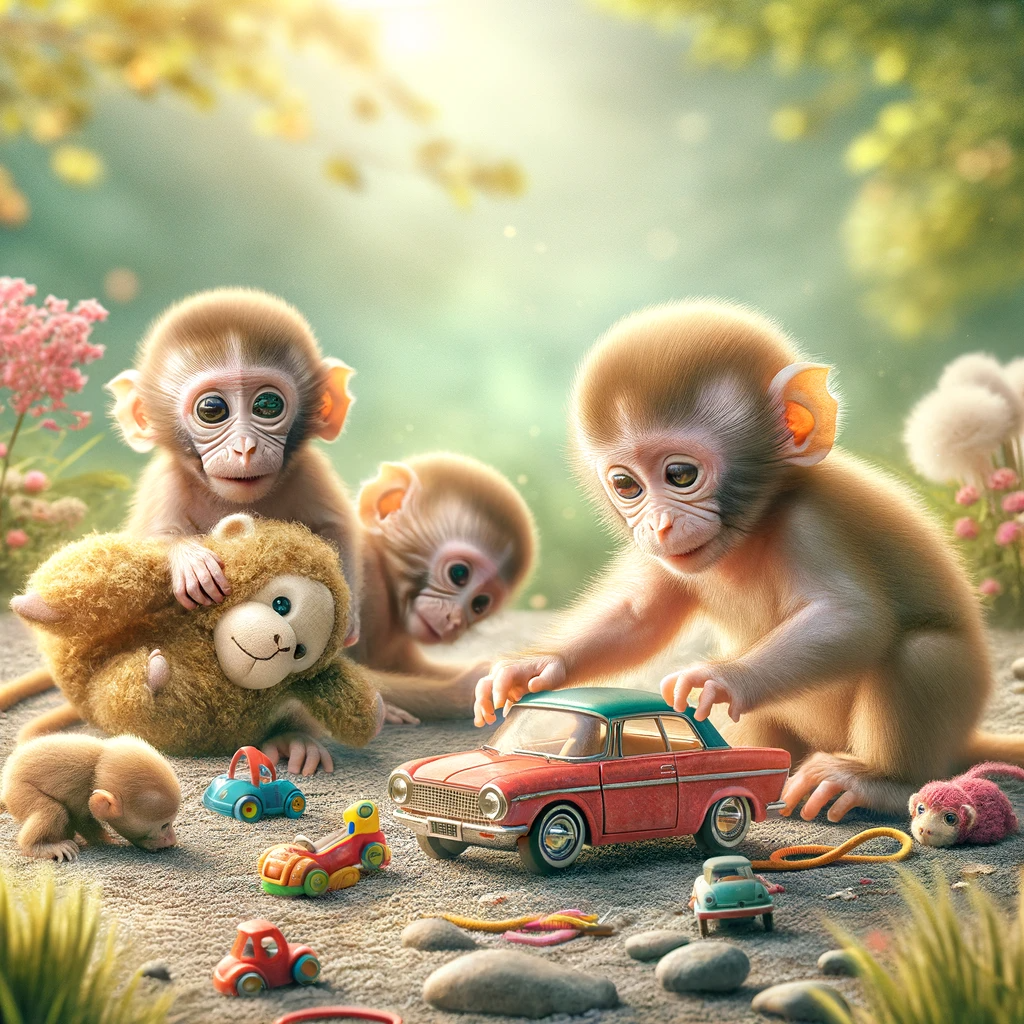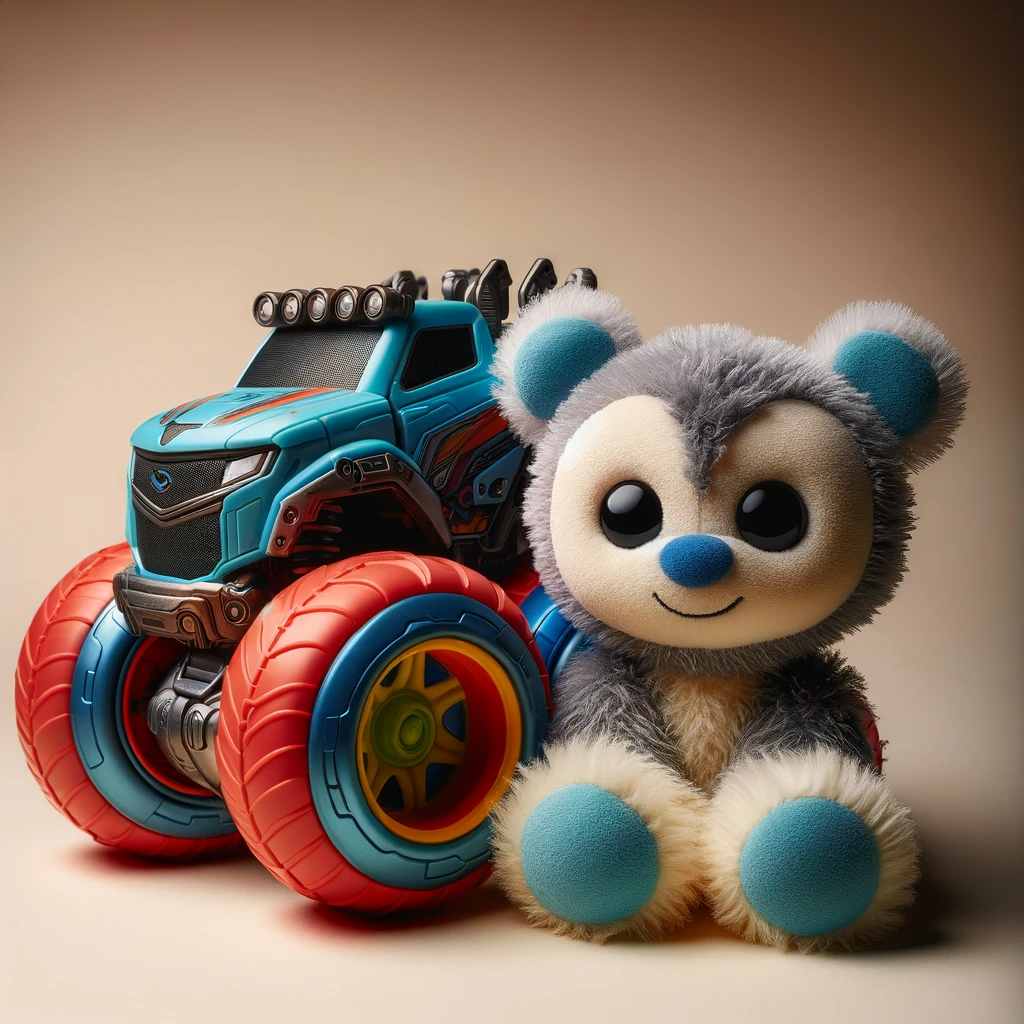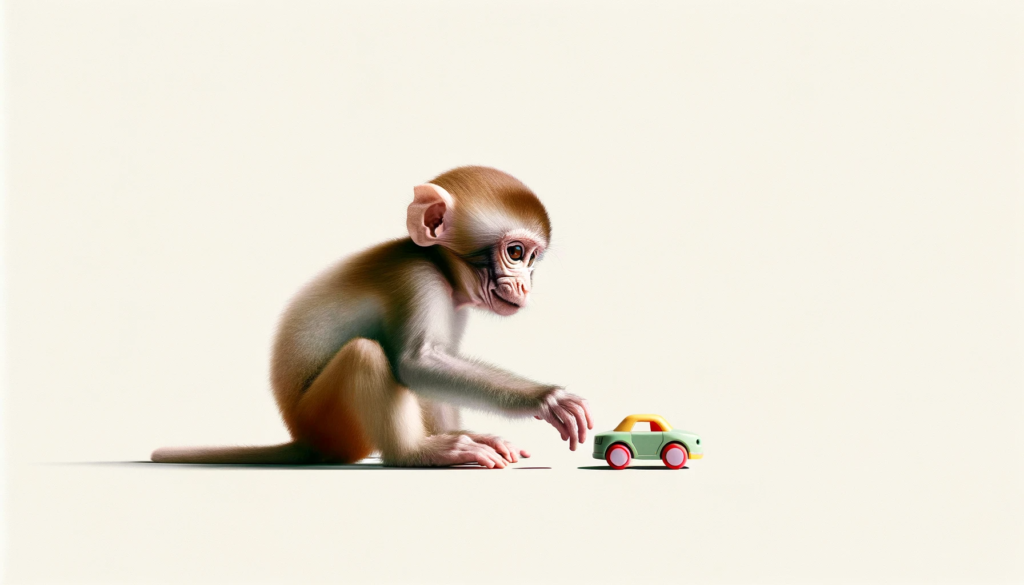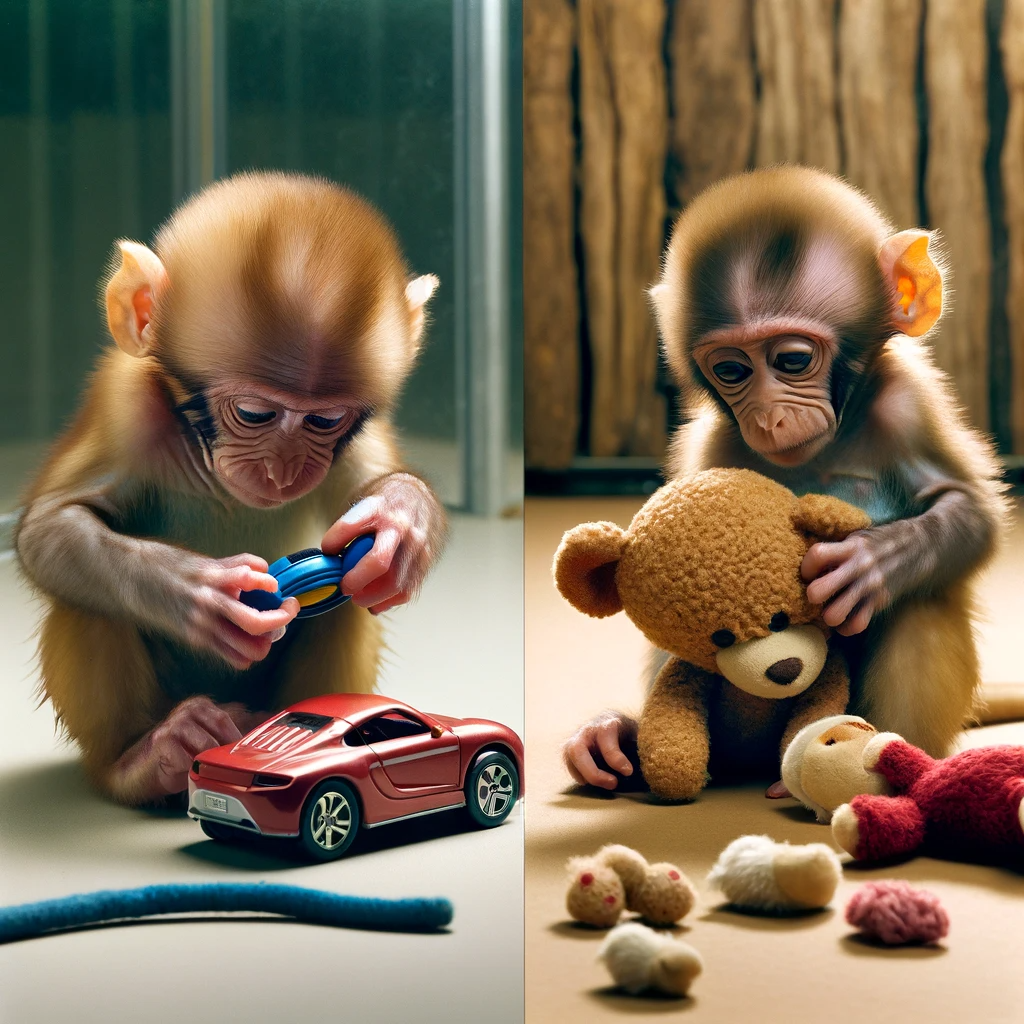Hassett, J M, Siebert, E R and Wallen, K (2008), Sex differences in rhesus monkey toy preferences parallel those of children. Hormones and Behaviour, 54(3): 359–64

Summary
In Hassett et al.’s study, toy preferences were examined in monkeys, whose behaviour is regarded as more biologically controlled than that of children. A behavioural checklist was used to observe and code interactions with stereotypical boys’ and girls’ toys. This study did not involve human participants. Data from another study was used to compare monkey toy preferences to children’s.
Psychology Being Investigated
The psychologists aimed to investigate whether male and female rhesus monkeys show differential preferences for certain types of toys, similar to how male and female children do. Moreover, the role of social rank in toy interactions was explored, alongside the question of whether these preferences might be hormonally organised. The study builds upon existing literature, such as Alexander and Hines’ 2002 study on vervet monkeys, and also draws upon established theories like those of Wallen (2005) and Maccoby (1998) on the influence of prenatal androgens and socialisation, respectively.
The study investigates several psychological aspects related to toy preferences, focusing on sex differences, socialisation, play, and the role of hormones:
Sex Differences – The study explores the well-established sex differences in toy preferences, with boys typically showing stronger preferences for masculine-type toys and girls showing more variability and often no statistically significant preference for one toy type over another. This sex difference is examined not only in humans but also in rhesus monkeys, with male monkeys showing a consistent preference for wheeled toys, paralleling boys’ preferences.
Socialisation – Traditional views suggest that socialization processes, such as parents or peers encouraging play with gender-specific toys, are the primary forces shaping these sex differences in toy preferences. This view posits that societal endorsements of toys as masculine or feminine drive children’s toy preferences to conform to expected gender roles. However, the study suggests that these sex differences in toy preferences can develop without explicit gendered socialization, indicating that factors other than socialization might play a role.
Play and Activity Preferences – The study considers the possibility that toy preferences may reflect biologically determined preferences for specific activities facilitated by specific toys, such as active manipulation or cradling. This perspective suggests that the differences in toy preferences between boys and girls may arise from their differing activity preferences shaped by different prenatal hormonal environments.
Role of Hormones – Prenatal hormone exposure, particularly androgens, is known to influence children’s toy preferences. The study references evidence from girls with congenital adrenal hyperplasia (CAH), who exhibit more boy-typical toy preferences than their unaffected sisters or control girls. This finding suggests that toy preferences are sensitive to prenatal androgen exposure, supporting the hypothesis that biological factors play a significant role in shaping these preferences.
Background
The background research for the study conducted by Hassett et al. is based on the interaction between biological predispositions and socialisation processes in the development and differentiation of behaviour. The study explores how pre-existing preferences, possibly biologically determined, shape the developmental environment, which in turn influences subsequent experiences. This principle suggests that both biological factors and socialisation processes are necessary for the full development of behaviour.
The research acknowledges that preferences and experiences are interlinked, with early life experiences, reflected in preferences for specific objects or activities, potentially shaping adult preferences for different lifestyles and careers. This concept is crucial in understanding the study’s approach, which investigates the toy preferences of rhesus monkeys as a parallel to human children’s toy preferences, focusing on the roles of sex differences, socialization, play activities, and hormonal influences.
The study builds upon the idea that both inherent biological factors and experiential, socialized aspects contribute to behavioral development, a concept that is central to understanding the complex interplay of various influences on toy preferences and associated behaviours
Aim
The main aim of the study is to investigate whether rhesus monkeys exhibit gender-specific preferences for human-stereotyped “masculine” and “feminine” toys, and to determine if such preferences are rooted in evolved sex differences in activity rather than socialisation processes.
Method
Subjects and Sampling Technique

The study involved a group of 135 rhesus monkeys (Macaca mulatta) living in a multi-male, multi-female social structure at the Yerkes National Primate Research Center Field Station. The animals had lived together for over 25 years. Fourteen monkeys were excluded due to prior hormonal treatment, and another 39 newborns were not coded due to identification difficulties. This left 61 females and 21 males as potential subjects. They were housed in 25m x 25m outdoor enclosures.
Materials

The researchers used two types of toys categorised by their physical properties rather than traditional gender labels: ‘wheeled’ and ‘plush.’ The wheeled category was analogous to masculine vehicle toys, while the plush category was comparable to feminine doll and stuffed animal toys.
Experimental Design and Controls
The study used an observational research design with seven 25-minute trials. Before each trial, monkeys were sequestered indoors and one-wheeled and one plush toy were placed 10 meters apart outdoors. Monkeys were then released, and interactions were videotaped. Toy placement was counterbalanced across trials to control for location bias.
Data Collection
Interactions with toys were video recorded, and specific behaviours were coded. Two observers worked collaboratively to ensure consistency in coding behaviours. Data were entered into Palm Pilots equipped with Handobs, a program designed for entering time-stamped behavioural information. Social rank and age of the monkeys were also included as variables for analysis.
Variables
- Measured variables – Interactions with toys, specific behaviours, social rank, and age.
- Manipulated variables – Type and placement of toys.
Ethical Considerations
The study followed guidelines set by the NIH and was approved by Emory’s Institutional Animal Care and Use Committee.

Results
The study found a significant interaction between toy type and sex in both the total frequency and duration of interaction with toys. This means that the type of toy (wheeled or plush) that monkeys interacted with was influenced by their sex.
- Toy type preference by sex (Frequency and Duration)
- Males showed a significant preference for wheeled toys over plush toys, both in terms of frequency and duration of interaction.
- Females exhibited no significant preference for plush toys over wheeled toys.
- Magnitude of preference for wheeled and plush toys
- Males had a significantly higher preference for wheeled toys compared to females’ preference for plush toys, in terms of both frequency and duration of interaction.
Average frequency and duration of interactions with wheeled and plush toys for both males and females, and magnitude of preference for sex-typical toys by sex.
The graph shows the average frequency and duration of interactions with two types of toys: wheeled and plush.
Key Observations
- Average Frequency of Interaction
- Males showed a higher frequency of interaction with wheeled toys compared to plush toys.
- Females had a slightly higher frequency of interaction with plush toys, but the difference was not as pronounced as in males.
- Average Duration of Interaction
- Males interacted with wheeled toys for a significantly longer duration than with plush toys.
- Females showed similar durations of interaction with both toy types, with a slightly longer duration for plush toys.
There was a stronger preference of male monkeys for wheeled toys and a more balanced interest of female monkeys in both toy types.
Key Observations
- Males (Wheeled Toys) – Displayed a significantly higher preference for wheeled toys, evident in both the frequency and duration of interactions.
- Females (Plush Toys) – Exhibited a much lower magnitude of preference for plush toys, in terms of frequency and duration, when compared to the males’ preference for wheeled toys.
Interpretation
Gender Differences – The study indicates that males and females have different toy preferences. Males show a significant preference for wheeled toys, while females do not have a strong preference.
Role of Social Factors – The study suggests that social rank may influence toy interactions among females but not among males.
Conclusions

It was found that male monkeys, like human boys, significantly preferred wheeled toys over plush ones, while female monkeys showed no strong preference, similar to human girls. The research indicated that social rank influenced toy interactions among female monkeys but not males, and these preferences were not solely due to socialisation processes.
This contrasts with findings in vervet monkeys, suggesting methodological differences might account for varying results.
The study proposes that hormonal influences and inherent activity preferences might shape toy choices, pointing to a complex interplay between biological predispositions and socialisation in developing behaviour.
This understanding challenges the view that toy preferences in primates, both human and nonhuman, are entirely the result of socialization, highlighting the role of inherent biological factors.
Strengths
- Controlled Experimental Design with Counterbalancing – The study made a meticulous effort to counterbalance the placement of ‘wheeled’ and ‘plush’ toys 10 meters apart outdoors before each of the seven 25-minute trials. This control for location bias greatly enhances the internal validity of the study, increasing our confidence that the variations in toy interactions are due to genuine preferences rather than arbitrary spatial positioning.
- Strict Adherence to Ethical Guidelines – Hassett et al. strictly adhered to the guidelines set by the National Institutes of Health (NIH) and obtained approval from Emory’s Institutional Animal Care and Use Committee. This ethical oversight ensures that the welfare of the rhesus monkeys was prioritised and lends further legitimacy to the study.
- Inter-Observer Reliability – The study employed two observers to code the behaviours of the monkeys as they interacted with the toys. This collaborative approach reduced the risk of observer bias and meant that data could be checked for reliability. Both observers used Handobs, a program designed for entering time-stamped behavioural information, ensuring that the coding process was standardised and replicable for reliability.
Weaknesses
- Environmental Factors – The environment in which the monkeys were raised and tested (e.g., a laboratory or controlled setting) might not accurately reflect natural living conditions. This aspect can influence their behavior and interaction with the toys, affecting the study’s relevance to natural toy preferences.
- Limited Toy Categories (Wheeled and Plush) – The researchers restricted their focus to just two types of toys, categorised as ‘wheeled’ and ‘plush,’ to represent masculine and feminine toys. This choice limits the generalisability of the findings. For instance, it remains unclear how these monkeys might interact with toys that don’t neatly fit into these categories.
- Potential Observer Bias – Although two observers worked collaboratively to code behavioural interactions there’s still a possibility for observer bias. The act of coding specific behaviours is inherently subjective and could be influenced by the observers’ own perceptions or beliefs, thus affecting the reliability of the data.
Questions
The study aimed to investigate toy preferences in rhesus monkeys and observe if there are any parallels with human gender-stereotyped toy preferences. The objective was to explore whether gender differences in toy choice reflect evolved sex differences in activity preferences, independent of socialisation processes.
The researchers categorized toys not by traditional gender assignments but by specific object properties. One set of toys was “wheeled” (most comparable to masculine vehicle toys) and the other was “plush” (most comparable to feminine doll and stuffed animal toys). The wheeled toys included items like a wagon, truck, and car, while plush toys included Winnie-the-Pooh™, Raggedy-Ann™, and a teddy bear.
The study found that male rhesus monkeys showed a significant preference for wheeled toys over plush toys. In contrast, female monkeys did not exhibit a significant preference for plush toys over wheeled toys. The study observed that both sexes interacted almost equally with wheeled toys, but males interacted significantly less with plush toys than females.
The researchers considered social rank but found it did not significantly influence the sex differences in toy preference. They observed that social rank correlated with the frequency and duration of interactions with both toy types for females but not for males, suggesting that the basic predisposition to engage in specific patterns of sexually differentiated behavior such as interest in infants or rough and tumble play is not determined by social rank.
The study controlled for potential confounding variables by considering factors like the distribution of males and females across ranks, the mean rank differences between males and females, and including dominance rank as a covariate in their analyses. However, the study primarily focused on comparing male and female monkeys’ interactions with two types of toys, while controlling for factors like social rank and age.
This question is subjective and requires personal reasoning. Based on the study, it can be argued that toy preferences might be influenced more by biological factors than social factors, as the study suggests that hormonally organised preferences for specific activities shape toy preferences. However, human social and cultural factors also play a significant role, especially in how toys are marketed and perceived in human societies.

